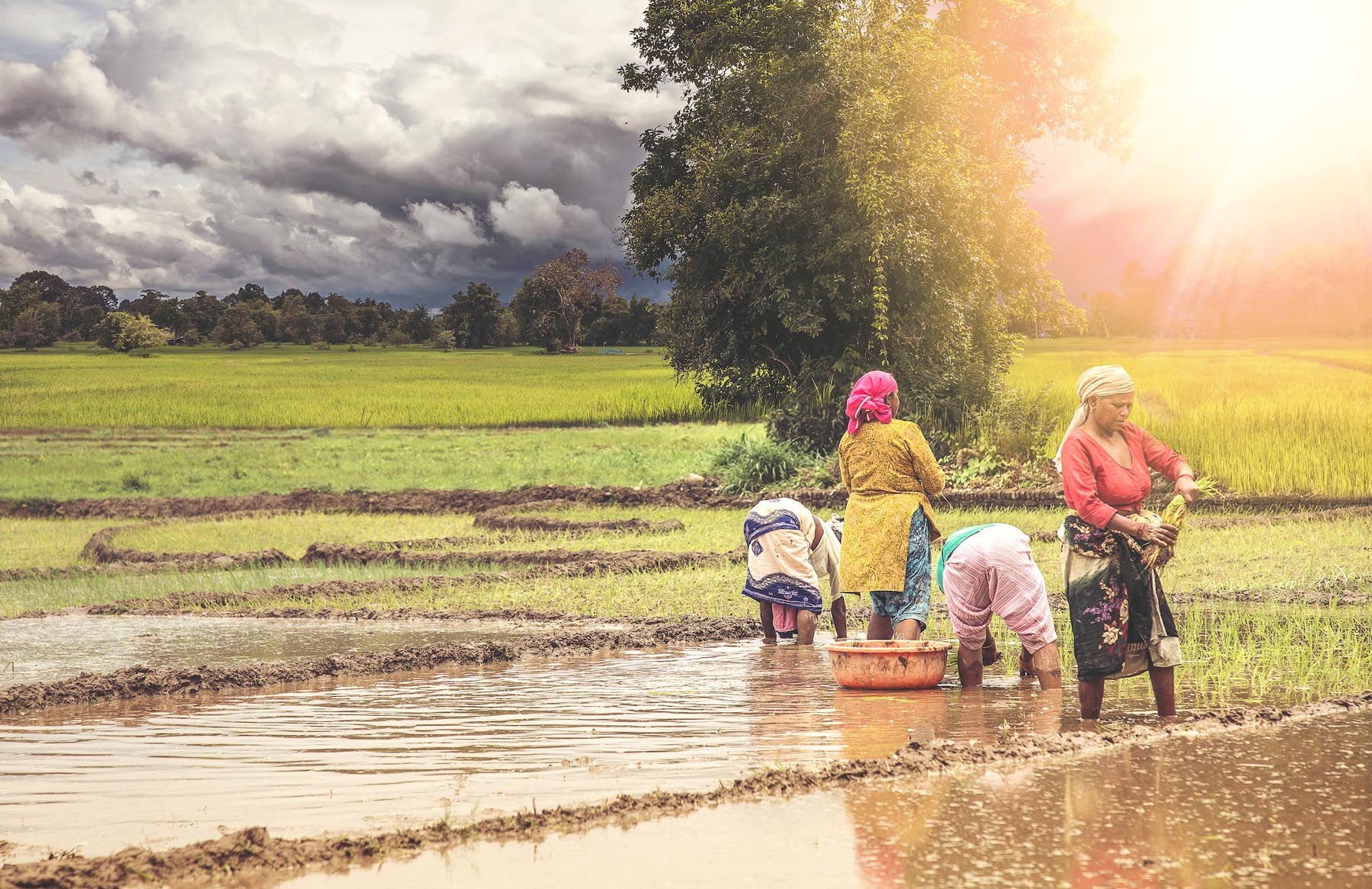This post is part of the CGIAR Research Program on Water, Land and Ecosystems (WLE) month-long series of blog stories on Ecosystem Services.
Diversity in land use can support ecosystem services such as biological pest control and reduce the need for insecticides. Evidence to support this has been found in North America, Europe and Australia, but very limited information is available from developing countries, where smallholder farming is predominant and local people are more at risk from consuming pesticide-contaminated food.
As the world’s largest pesticide producer and consumer, China uses 1.3 million tons of pesticides annually – 2.5 times the global average usage per unit area. Chinese farmers have relied on chemical insecticides as their primary pest control method, with insecticides often applied in an indiscriminant fashion.
China is also the world’s largest cotton producer, a crop that accounts for a large share of insecticides used, both in aggregate and per hectare use, even after the extensive adoption ofinsect-resistant Bt cotton. Agriculture in China is characterized by highly disturbed agro-ecosystems, but diverse land use at the plot level is still common. Globalization and rural-to-urban migration however, is shifting land use towards monoculture systems, where the same crop is grown year after year. The concern is that such landscape simplification may result in even greater insect pest pressure, and thus even more insecticide use.
Recently, we conducted a study in China’s Hebei province on the effects of land use on the abundance of natural pest enemies at the landscape scale. Natural enemies are insects that feed on crop pests, protecting crops from pest damage and reducing the need for chemical insecticide use. The empirical research looks at smallholder field crops in a developing country context, using household survey, insect sampling, remote sensing and ground-truthing.
Our results indicate that in the Hebei province, high land use diversity itself (measured by Shannon or Simpson index) is not associated with high density of ladybeetles in cotton, which are natural enemies of a pest called cotton aphid. Instead, areas growing large amounts of maize were associated with greater densities of ladybeetles. This may be because of the maize-wheat crop rotation in the studied areas. Maize and wheat both require fewer pesticides and may provide habitat support for natural enemies that can spill over to other crops, such as the cotton crop.
Working as a natural pest control agent, ladybeetles provide economic value to farmers. The estimated economic value of conserving one additional ladybeetle per 100 plants (above the current level) is $4.96, much higher than the “total” cost of one additional kilogram of insecticides (-$8.57/ha)*.
But most farmers are not aware of the service provided by ladybeetles. The excessive use of insecticides by farmers in China has had detrimental consequences for natural enemies in cotton. For example, each additional kilogram of insecticide used per hectare of land (above the current level), results in a decrease in ladybeetle densities by 29.7 heads/ha. Furthermore, the majority of farmers surveyed did not account for the populations of natural enemies when making pesticide use decisions. Many farmers even mistakenly treated natural enemies, such as ladybeetles, as pests that require spray.
Implications for sustainable intensification
There is a clear lack of awareness among farmers on the value of natural enemies for crop health, resulting in a number of missed opportunities. Better transfer of information to farmers can support the health of crops, the environment, and farmers themselves. A reduction in pesticide use can help reduce public health and environmental risks associated with chemical pollution. Farmers can also benefit from less exposure to toxic chemicals as well as increased profits by harnessing natural enemies and reducing the amount of money spent on pesticides.
The study also shows that certain crop land use has the potential to enhance the biological control of cotton pests in northern China, where non-crop areas such as forest, shrubs and bushes are scant. Coordinated habitat management at the landscape scale can potentially be economically viable, especially for organic producers who have to rely more on pest control services provided by natural enemies. Policies that encourage farmers to account for the human health and environmental costs of insecticides would also help incentivize the adoption of habitat management.
Related materials
- Project information
- More from CGIAR Research Program on Water, Land and Ecosystems (WLE) Ecosystems Services blog series
About the authors
Wei Zhang is a research fellow in the Environment and Production Technology Division of the International Food Policy Research Institute (IFPRI).
Mark Rosegrant is division director of the Environment and Production Technology Division at IFPRI and project lead for Landscape Diversity and Ecosystem Services in Agricultural Ecosystems: Implications for Sustainable Growth and Rural Poverty in China.







